Welcome to the captivating world of modern Gothic interior design! Dark, moody, and undeniably charming, this design style combines the opulence of classic Gothic architecture with contemporary sensibilities. It's a perfect blend of old and new, creating a mesmerizing atmosphere that transcends time and trends.
Evolution of Gothic Interior Design
Gothic Architecture in the Middle Ages
Gothic architecture originated in northern France in the 12th century, heavily influenced by Christian cathedrals. It quickly spread, incorporating elements such as pointed arches, ribbed vaults, and flying buttresses. The intricate designs of Gothic architecture extended beyond buildings and into sculptures, textiles, stained glass, and illuminated manuscripts.
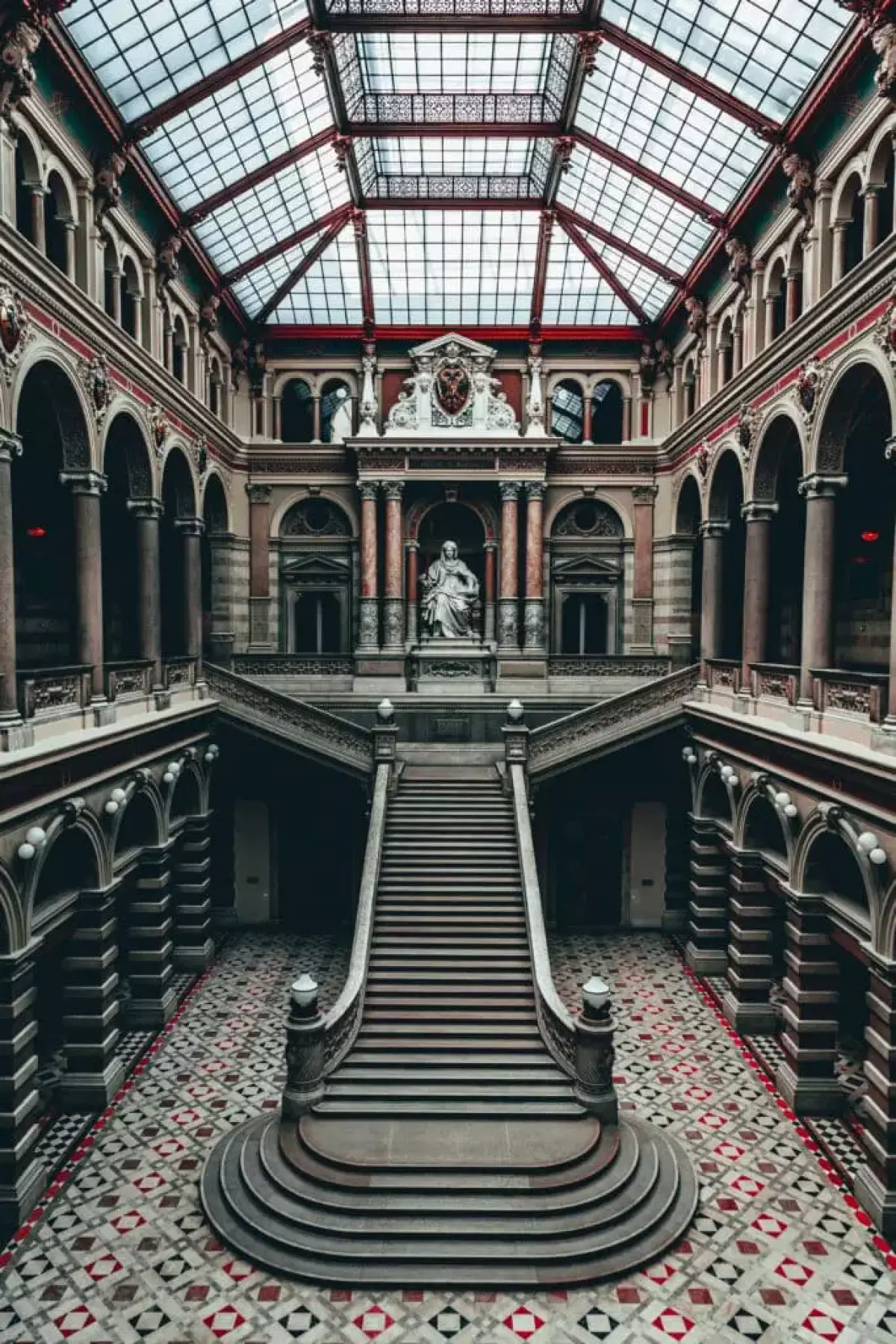 Photo by Josh Hild on Unsplash
Photo by Josh Hild on Unsplash
Renaissance to Neo-Gothic
As the Middle Ages transitioned into the Renaissance, Gothic architecture began to be replaced by other styles. However, a revival of interest in the 18th and 19th centuries led to the emergence of Neo-Gothic or Gothic Revival architecture. This era saw Victorian homes incorporating Gothic-inspired elements like pointed arches, turrets, and intricate tracery.
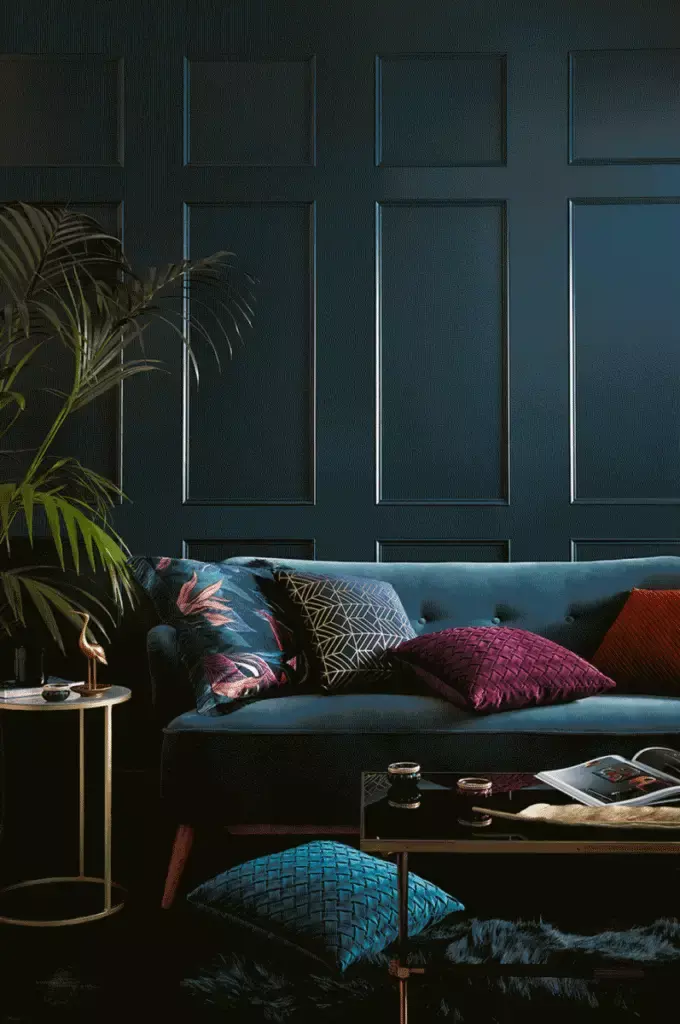
Modern Gothic Interior Design
Today, modern Gothic interior design artfully blends dark aesthetics with contemporary elements. It features elegant, ornate furniture, moody color palettes, and luxurious fabrics. Details such as gilded mirrors and lush textiles add to the dramatic atmosphere. This design style remains both theatrical and versatile, lending a timeless charm to any space.
Fundamental Elements of Modern Gothic Interior Design
Gothic interior design has made a comeback with modern adaptations, creating unique and atmospheric spaces in today's homes. Here are the foundational elements that define modern Gothic interior design:
Color Palette and Fabrics
The Gothic color palette revolves around dark, moody hues such as blacks, deep reds, and rich purples. However, lighter tones can also provide balance and visual interest. Fabrics play a crucial role as well, with high-quality materials like velvet, silk, and brocade creating a sense of opulence and grandeur within the space. Tapestries and plush draperies add depth, texture, and warmth.
 by Woodgrain
by Woodgrain
Windows and Doors
Windows are essential in Gothic interior design, often featuring stained glass and pointed arches. They not only provide an interesting architectural aspect but also allow for dramatic and colorful lighting effects. Gothic-style doors often include ornate carvings, dark wood, and metal accents.
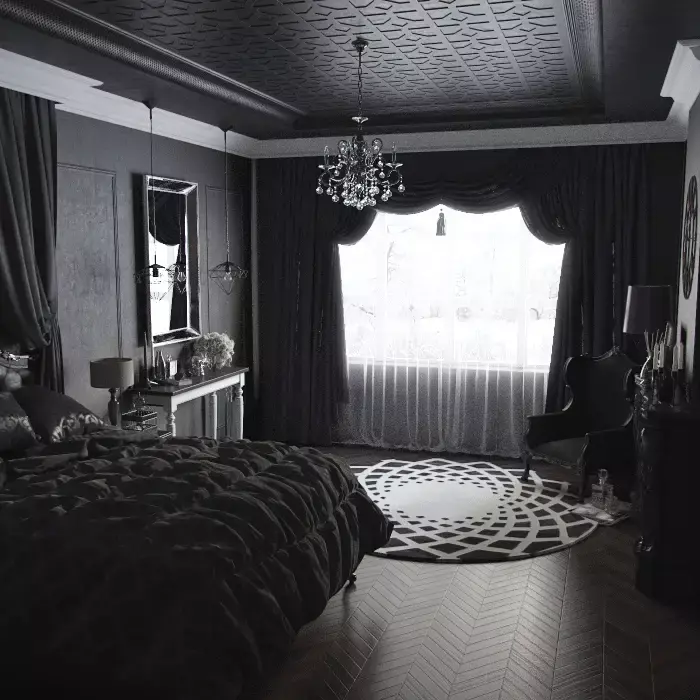 by Storeables
by Storeables
Arches and Ceilings
Incorporating pointed arches and vaulted ceilings emphasizes the Gothic aesthetic. These architectural features create an air of grandeur and elegance while enhancing the sense of space and height. Wood ceiling beams or intricate molding further enhance the visual impact of the room.
 by Iliya Gushin
by Iliya Gushin
Fireplaces and Walls
Gothic-inspired fireplaces serve as impressive focal points in Gothic interiors. They feature carved stone surrounds, bold columns, and elegant mantle designs. As for the walls, wood paneling or stucco provides texture and depth, while wall art featuring retro paintings or vintage sculptures adds character to the room.
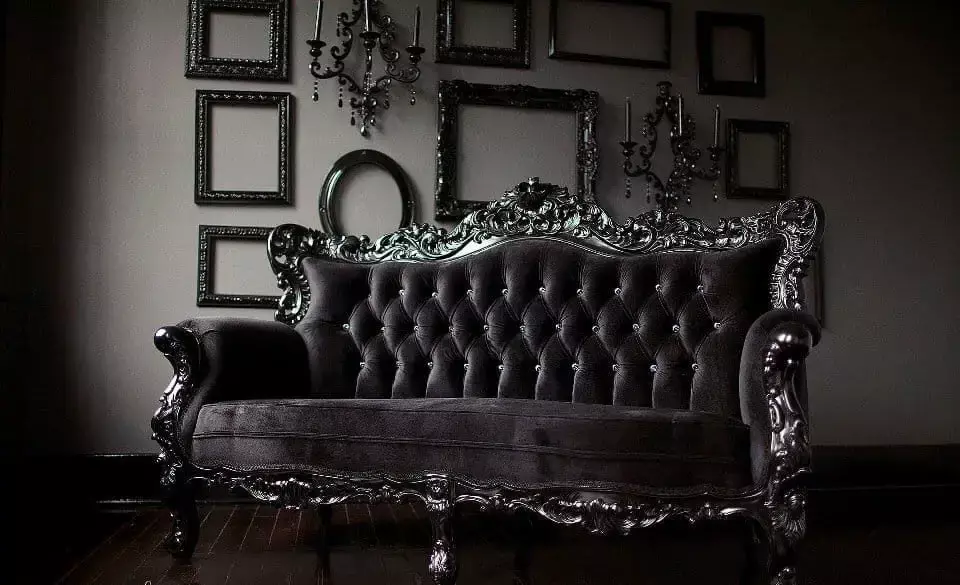 by Woodgrain
by Woodgrain
Furniture and Accessories
Modern Gothic furniture showcases exquisite craftsmanship, often with ornate details and dark tones. Upholstered pieces in rich fabrics like velvet make a bold statement, while accessories like candles, pottery, and silver or brass accents add to the overall atmosphere. Functionality and form come together in this unique interior design style, creating stunning spaces with a touch of macabre elegance.
 by INNBLASTUR
by INNBLASTUR
Incorporating Gothic in Modern Spaces
Welcome to a world where dark meets dramatic, elegance meets mystery, and vintage nuances blend with contemporary sensibilities. Modern Gothic interior design allows you to channel the timeless beauty of Europe's Gothic architecture into your own living spaces. Embrace ornate accents, a luxurious atmosphere, and a delightful dance of dark and moody colors as we explore the intricate realm of Gothic-inspired interiors.
Gothic Inspired Living Rooms
A Gothic living room should ideally showcase a mix of classic and modern elements inspired by Gothic architecture. Select furniture with dark, rich fabrics like velvet, accompanied by carved wooden pieces and intricate detailing. Opt for unique lighting, such as wrought iron chandeliers or atmospheric wall sconces, to evoke the ambiance of ancient castles.
Incorporate elegant fabrics such as velvet draperies adorned with vintage-inspired paintings, gargoyles sculptures, and other Gothic symbols. The perfect Gothic-inspired living room balances a mysterious color palette with grand design elements that highlight its Victorian roots with a nod to maximalism.
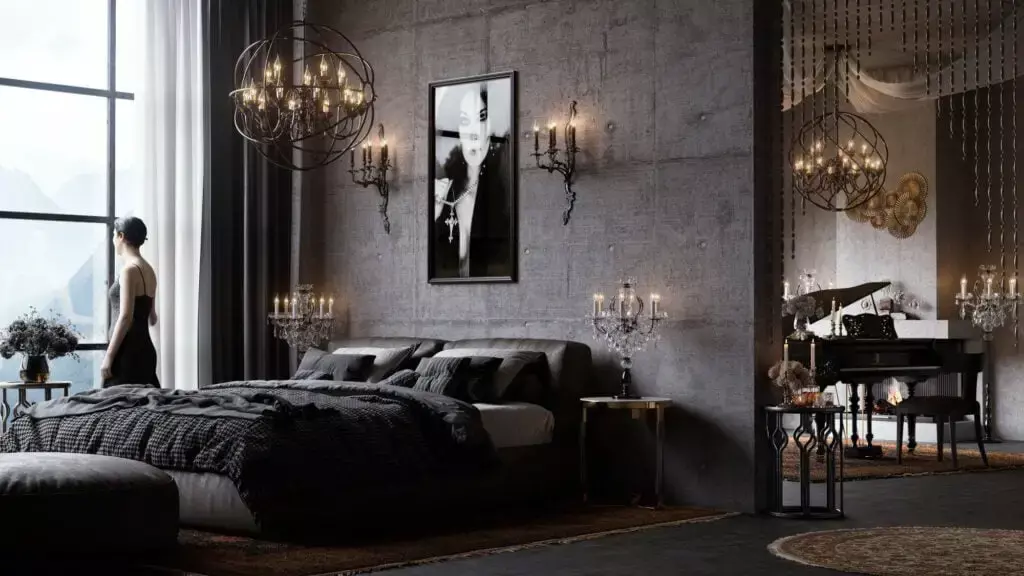 by Homes & Gardens
by Homes & Gardens
Dark and Dramatic Bedrooms
Transform your sleep quarters into a sanctuary of dark romance by embracing the Gothic aesthetic. A dramatic canopied bed showcasing intricate metal or carved woodwork serves as a stunning focal point. Install a blend of ambient and accent lighting, such as gorgeous wall sconces or a vintage chandelier, to cast an enchanting glow on your bedroom's gloomy setting.
Complement the look with luxurious fabrics like velvet or brocade for your bed coverings and drapes. Blend the colors seamlessly by utilizing a rich yet dark color palette. Add a touch of intrigue with Gothic-inspired accessories such as an elaborate mirror or an antique armoire.
 by padstyle
by padstyle
Mysterious and Elegant Bathrooms
Introduce the Gothic style into your bathroom with exquisite tiles influenced by grand cathedrals and gargoyles. Slipper-shaped clawfoot tubs, ornate mirrors, and antique fixtures can add the perfect touch of Gothic charm to your bathroom.
Opt for a signature color palette that consists of dark, moody hues and incorporate contrasts with lighter accents like white and gray. Infuse some Victorian flair with floral patterns and textures in your selection of draperies or bathroom rugs. Round off your look with vintage cast iron or brass fixtures that hark back to a time of European elegance.
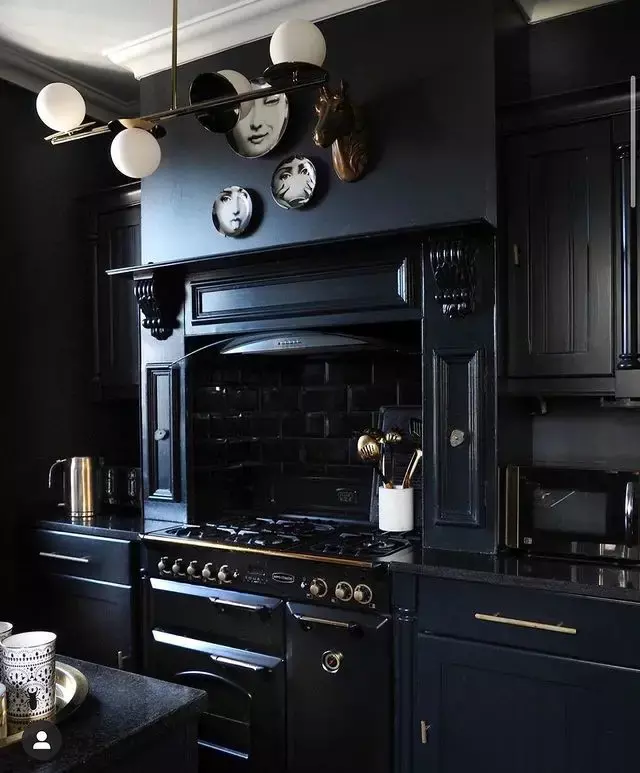 by architecture art designs
by architecture art designs
Neo-Gothic Kitchen Designs
Bring some Gothic-inspired opulence into your kitchen by blending modern amenities with the unmistakable design elements of Neo-Gothic architecture. Mix dark wood cabinetry adorned with eye-catching carvings, embellishments, and unique hardware with moody color palettes like deep navy, emerald green, or rich burgundy.
Integrate modern style and functionality with a nod to Gothic décor. Incorporate eye-catching accents like a dramatic stone or tile backsplash, luxurious fabrics for your window treatments, and antique accents. Finish off your breathtaking Neo-Gothic kitchen with elaborate lights that masquerade as modern-day relics in your enticing culinary kingdom.
 by Rachel Edmonds
by Rachel Edmonds
Slip into the world of modern Gothic interior design, where elegance and grandeur blend with dark and moody elements to create a captivating and mesmerizing environment. This design trend, closely related to the dark academia aesthetic, is gaining popularity by drawing inspiration from Gothic architecture and incorporating contemporary elements to balance the darkness. Embrace the captivating power of modern Gothic design as you explore the challenges and solutions of this unique style.
Challenges and Solutions in Modern Gothic Design
Avoiding Macabre and Gloomy Atmosphere
One of the most significant challenges in modern Gothic design is preventing the space from becoming overly macabre and gloomy. To overcome this, focus on the following strategies:
- Use dark colors strategically: Dark colors set the tone, but overuse can make the space feel oppressive. Balance dark hues with lighter, contrasting shades to create visual interest.
- Texture variation: Integrate velvets, rich fabrics, and other textures to add depth and warmth.
- Layered lighting: Implement soft, ambient lighting alongside accent lights to highlight key features and create a cozy atmosphere.
Balancing Elegance and Grandeur
Emphasizing elegance and grandeur without overpowering the room can be challenging. However, there are ways to ensure that modern Gothic interiors maintain their sophistication:
- Accentuate architectural elements: Emphasize arches, moldings, and detailed woodwork, which are typical features of gothic architecture.
- Select ornate accents carefully: Opt for opulent items like chandeliers, sculptures, and embellished mirrors, but use them sparingly throughout the space.
- Incorporate antiques: Blend contemporary pieces with antiques that showcase craftsmanship, injecting character and charm into the space.
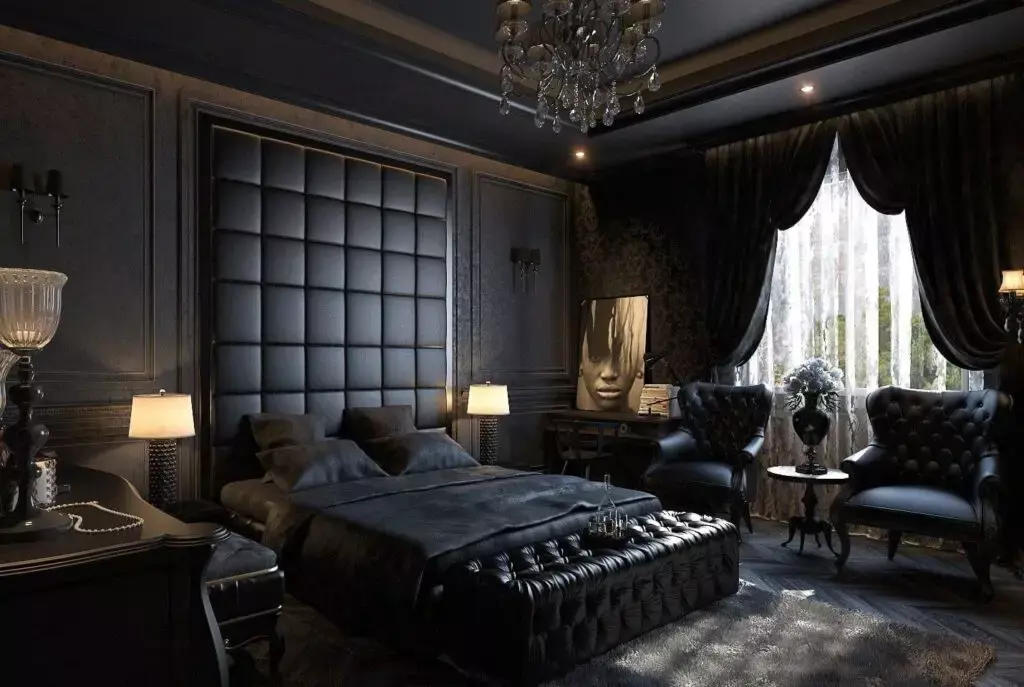
Remember, the key to successful modern Gothic design lies in the details and achieving a balance between darkness, elegance, and grandeur while avoiding a macabre or gloomy atmosphere. Mastery of these concepts will turn your space into a modern Gothic haven.
Frequently Asked Questions
If you liked this post about modern Gothic interior design, don't forget to follow us on Pinterest for more interior design news!









